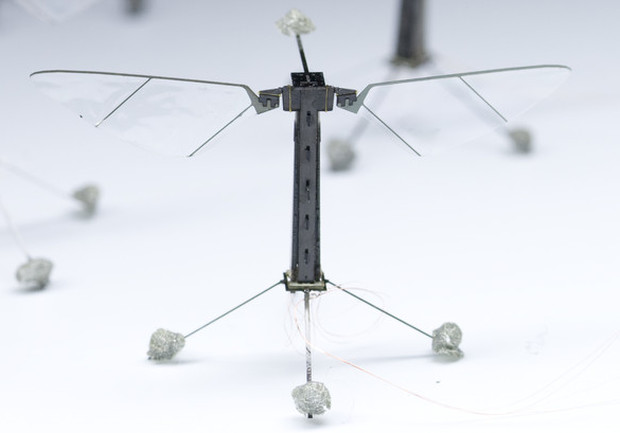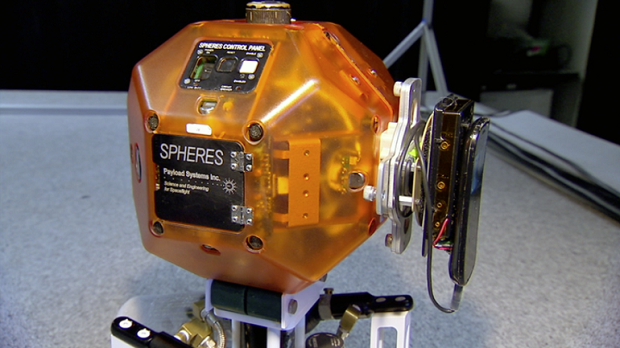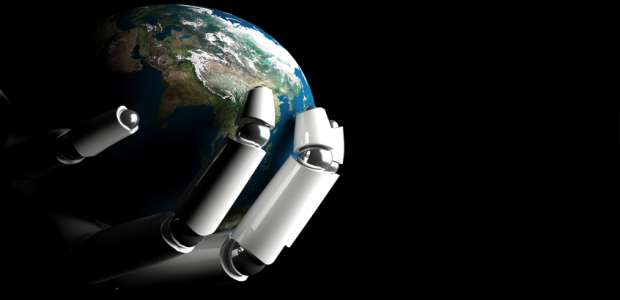The future of humanity may depend on the current efforts and accomplishments in the field of space exploration. Recent attempts like the Mangalyaan launched by ISRO are projects that could lead to new clues which may help in finding secrets regarding the universal mystery of life in space. From flying android space bees to an autonomous submarine on another world, we unveil the robots that could change space exploration forever.
Before we explore the various hi-tech space robots, here is a cool animated video explaining some concepts regarding space exploration. Illustrations made by Omkar Bhagat from The Curious Engineer Channel on Youtube.
Robobees
These swarm robots might one day be transported in bulk to a human colony on another world. These tiny androids could pollinate plants on an extraterrestrial colony. If we are to one day colonise distant worlds such as Mars, the current line of thinking is that we will need to grow plants to create a sustainable colony.
On Earth plants are pollinated by bees, but on a world where such life doesn’t exist, the problem is just how plants will spread their pollen and in turn produce fruit and seeds?

Perhaps this role will fall not to living organisms, but to tiny androids. It could be that future space explorers need look no further than RoboBees. Developed by Harvard’s School of Engineering and Applied Sciences. These tiny robots would be able to pollinate an extraterrestrial field of crops without input from humans, taking away the laborious process of manual pollination.
Also Read: Life on Mars,Titan, or Europa – A Genuine Possibility?
Here on Earth researchers have proven that the RoboBees, which are nearly identical in size to regular bees, are able to fly successfully. The tiny wings use artificial muscles in the form of piezoelectric materials to move the wings. This means they could then transport pollen from plants. Each RoboBee weighs a miniscule 0.5 grams (0.02 ounces) meaning hundreds or even thousands could be taken on a future mission into space without taking up too much room.
While the Harvard scientists haven’t announced plans to begin developing the RoboBees for use in space yet, others can already see the potential of such swarm robotics.
Researchers have published a paper on the challenges and applications of swarm robotics, in the International Journal of Engineering and Computer Science. It ponders the future of human civilisation and whether miniature robots will be used in colonies to build a suitable habitat for agriculture.
Android Pioneer
Who will take the first step on Mars: man or machine? Valkyrie is a next-generation humanoid robot that one day might be used as a precursor to humans to walk on another world. If this NASA robot gets its way, the first giant leap on the Red Planet will be for humanoid robot-kind. The humanoid robot that could beat humans to Mars.

Valkyrie is a robot intended to one day work on another world as a precursor to human explorers. The prototype is roughly the same height as a human but weighs a rather hefty 130 kilograms (287 pounds). A suite of cameras enables it to walk upright and hold tools, while a backpack means it can wander around and stay powered without needing to remain plugged into a power source.
By using a human-like design, the team behind the robot says it would be capable of traversing difficult terrain, such as on Mars, and could examine samples like rocks with ease. It has 44 degrees of freedom, helping it mimic the actions of a human as closely as possible, while its hands can move, spin and grasp. Perhaps its best feature of all is that it can replace its limbs, swapping any dodgy arms out in a matter of minutes.
Admittedly the robot still has a long way to go to be considered as a viable future space explorer. It’s in the very early stages and will need to ultimately be autonomous, much lighter and also much more capable. However, the potential for robots like these to explore dangerous locations where humans cannot tread just yet is plain to see.
Flying Training Bots
Star Wars fans may remember in Episode IV: A New Hope, when Luke Skywalker is training to become a Jedi by protecting himself with a lightsaber from floating balls that fire lasers.
Well, that’s exactly what these robots are based on. Star Wars-inspired robots that will test spacecraft tasks on the ISS. Three of these bowling ball-sized, spherical satellites are being used inside the ISS to test autonomous rendezvous and docking manoeuvres for spacecraft. Inside the ISS the SPHERES can fly freely, attempt obstacle-avoidance, meet up with one another and more.

Each robot has its own power, propulsion, computers and navigation equipment. They measure around 25 centimetres (9.8 inches) in diameter and use 12 carbon dioxide thrusters to fly around the cabin.
NASA is planning to upgrade each of them with a smartphone loaded with Google’s new 3D-mapping software. Project Tango. Using this they will be able to operate in the ISS faster than their 2.5-centimetre-(one-inch) per-second top speed. It’s hoped the robots could perform routine tasks outside the ISS to save astronauts from making spacewalks.
We will continue to look at some more hi-tech space robots in our upcoming posts. Stay tuned.
-end-


































